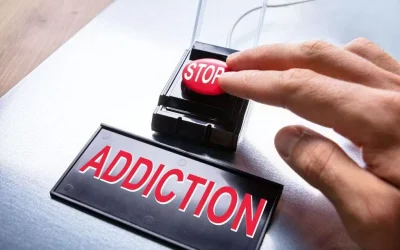Likewise, data were deleted if the respondent used two seconds or less on the subsequent RRT questions @@[See Ref. [37] for further information on data quality control]. The RRT method was chosen after discussing the advantages and disadvantages when compared with direct questioning. The reduction in social desirability bias when using RRT has been substantiated in several studies since its introduction in 1965 [for an overview, see@@ [13, 32].
Re: Should athletes be allowed to use performance enhancing drugs?
- A positive test result would consist of too dramatic a change from the established individual baseline.
- We take punitive approach but and a lot of effort is spent in outsmarting the screening process.
- Then, right before the event, the RBCs that had been removed prior would be injected back into the athlete, resulting in an overabundance of RBCs and hemoglobin, allowing a greater delivery of oxygen to working muscles.
- Note that the studies cited in this paper are chosen as being historically important or representative of the bulk of the research on the topic, and the broad overview provided in this paper does not aim to cite all evidence on the effects of these substances.
The World Anti-Doping Agency defined doping as “breaking one or more anti-doping rules,” meaning that athletes who were found to be “positive” either used substances or methods present on the list of banned substances or were not compliant with doping control regulations [48]. On the basis of the WADA definition, some studies have examined the prevalence of doping by inquiring about the substances respondents used in the Performance Enhancing Drugs past that were subsequently classified according to the WADA list [15]. However, we deemed this approach appropriate for the population of adult athletes but not for adolescents. The respondents evaluated the frequency of their perceived experiences with doping on a six-point scale ranging from 1 (no) to 6 (yes, regularly). Similar research methods for doping prevalence have been implemented by other studies [13].
Enhanced Games out to disrupt ‘old, slow’ Olympics with doped up athletes – Reuters
Enhanced Games out to disrupt ‘old, slow’ Olympics with doped up athletes.
Posted: Wed, 14 Feb 2024 08:00:00 GMT [source]
Anabolic-Androgenic Steroids
- Other national surveys have found that, depending on the methodology used, 2.1%-11% of adolescents reported past or current use of PEDs [10–14].
- By shifting the focus from the individual athlete to the sporting context, we can see how harms to doping athletes are socially produced (c.f. Rhodes, 2002).
- The fact that the question addressed prohibited behavior most likely contribute to the high INC.
- The probability of detecting a cheater who uses doping methods every week is only 2.9% per test.”5 It is time for a different approach.
- The treatment program is agreed upon by medical personnel and the player, who can complete treatment as either an inpatient or an outpatient.
Oxygen is critical to the energy production process, so the more oxygen your muscles receive, the more energy they can produce. Thus, all other things being equal — skill level, efficiency https://ecosoberhouse.com/ of movement, etc. —the endurance competitor who delivers the most oxygen to their muscles wins. As it turns out, Armstrong was cheating throughout the years but was able to cover it up.

RRT Questions on Prohibited Performance-Enhancing Drugs
- Pretty much every night, if not every night at least every other night, I’d wake up usually between two and three in the morning and just sit there for 45 minutes and stare at the ceiling.
- These additions appeared to be particularly productive in the case of the acceptance of cheating.
- When REP workability has been lost—a normal part of the sports experience—athletes employ personalized ways of bringing it back.
- Even athletes who were not part of the doping system suffered reputational and economic damages.
- A number of behavioral and psychological factors have been related to PED abuse in adolescents.
Table I shows the mean scores for the determinants and the correlation coefficient of these determinants with the intention to use performance-enhancing drugs. With three exceptions (satisfaction with own appearance, self-efficacy regarding the acquisition of relevant information and self-efficacy in contacting a physician), most determinants significantly correlated with intention to use. This produced 197 respondents who volunteered to participate, 193 of whom actually returned the questionnaire (98%). Three questionnaires were not fully completed, and 46 questionnaires were excluded from analysis because respondents did not practice bodybuilding, fitness, powerlifting or combat sports. Under a federal law, hospital emergency departments must provide appropriate emergency medical treatment to any patients who need it.
As regards the use of medication for training or competition for purposes other than performance enhancement, 44 percent report such use. Noteworthy, instruction non-compliance for this question is 37 percent, so while 44 percent is the lower limit of the true prevalence, it could possibly be up to 81 percent. The original idea was to measure the point prevalence of doping in recreational sports in Europe in the autumn of 2020. However, as most sports were shut down during the COVID-19 pandemic, we could not ask respondents about their current behavior. After postponing for some months, and still no sign of a forthcoming general European reopening of sports and societies, we decided to run the survey in the spring of 2021 and inquire respondents about their behavior in 2019.
Anti-doping organizations, drug testing in athletes, and rules
Athletes take human growth hormone, also called somatotropin, to build more muscle and do better at their sports. But studies don’t clearly prove that human growth hormone boosts strength or helps people exercise longer. These doses are much higher than those that health care providers use for medical reasons.
Human growth hormone
Consequently, because of the incoming inquiries about the meaning of the term “image enhancement” in association with the unusual high rate of INC we decided to omit this variable from further analyses. Though there is a range of motivations for engaging in doping (Henning & Dimeo, 2014), a primary one at the elite level is winning. For elite and professional athletes, the monetary incentives to win can be huge and provide a reason for athletes to use prohibited substances (Aubel & Ohl, 2014; Fincoeur, Cunningham & Ohl, 2018). However, the physical and social risks of doping are multiplied when individuals must secure their own supply, determine their own doses, minimise side effects, and prevent being caught through in or out of competition testing. One way of avoiding some of these issues is for athletes to collectively dope, thereby sharing the burden of risks and working together to minimize them.
Why are we so opposed to performance-enhancing drugs in sport?


